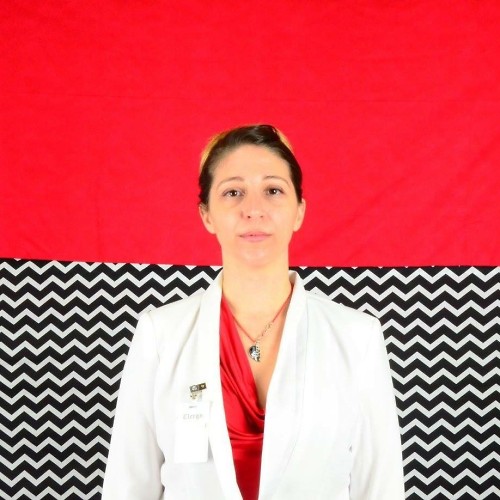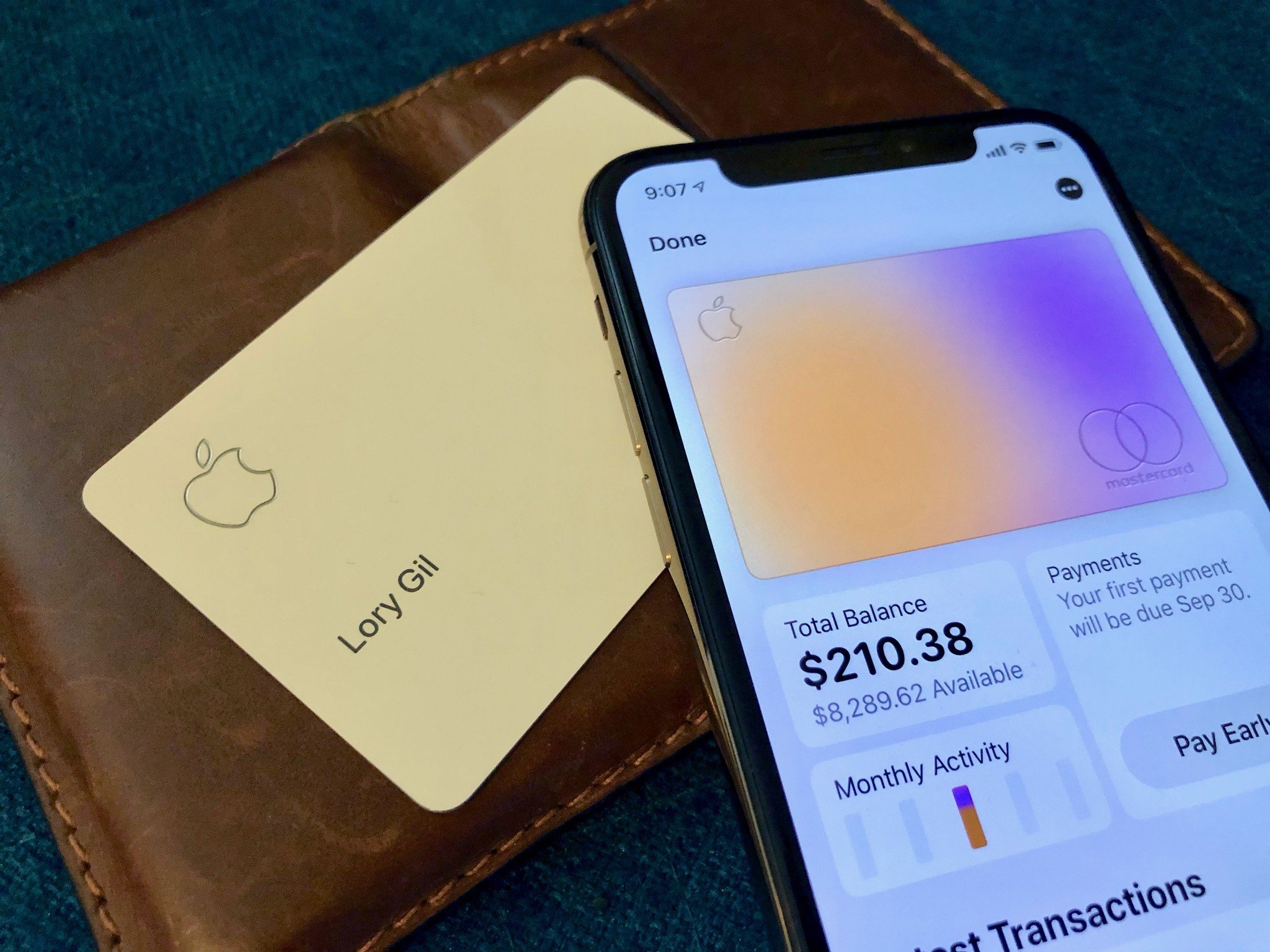
I never thought I'd be sitting here writing a review of a credit card. I should have seen the writing on the wall back when Apple Pay first launched. Apple was headed for something bigger than just a peer-to-peer payment service. Here we are today, five years later, drooling over that titanium beauty we all want in our wallets as much as we want an iPhone in our pockets. With all the hype and all the marketing that comes along with Apple Card, it really still is just a credit card, after all. So what makes it so special?
For people who want
- Super fast credit approval
- A sleek statement interface
- A credit card to match their Apple lifestyle
- Immediate ability to pay off the balance right from their iPhone
- Fast Daily Cash reward payouts
- Constant interaction with their credit card activities
- Reminder alerts to pay bills
- A deeper understanding of what paying off a balance means
Not for people who want
- To use an Android phone
- To avoid being exposed to more debt accumulation
- To avoid being made fun of for having an Apple Card
- To connect to third-party finance apps
Maybe. Maybe not.
Is it a good idea to apply for an Apple Card?

I've said this a few times, and will continue to remind everyone; Apple Card isn't like a new iPhone. Adding any level of credit to your life puts you at risk for going deeper in debt than you may feel comfortable with. It's a credit card, after all. Don't get an Apple Card just because you want that pretty new titanium card or because you want to see how the interface looks in the Wallet app. Only agree to an Apple Card offer if you feel that you can be responsible to own this new level of debt.
Yes, having an Apple Card does make me feel like I'm in some special category of serious Apple fans, and I like that. But I can tell you that the day after I accepted the offer from Goldman Sachs and signed up for $8,500 of credit, I felt a tinge of regret. I've worked very hard to achieve the credit score that I have now (I went through my own bout of bad credit 20 years ago), and it didn't happen by opening up new lines of credit just because I was excited about the company offering it. I now sit with an Apple Card in my wallet and in my Wallet app (connected to Apple Pay) and worry daily about whether this was a good idea.
I'm more financially stable than I have ever been, but that could change at any time. Now that I've added another credit card to my life, I've got more responsibility and more decisions to make on whether I should drop a large sum of money on something like a new iPhone with cash or credit. Will I have enough money in the bank to cover the entire purchase at the end of the month? Should I carry over a balance this month because I want to spend cash on something else right away?
It's a lot to think about and a lot to prepare for if you decide to apply. Don't just dive in with your eyes closed. Remember, this is still a credit card, even if Apple has made the experience something different then ever before.
Credit score woes
iMore offers spot-on advice and guidance from our team of experts, with decades of Apple device experience to lean on. Learn more with iMore!
How applying for Apple Card affects your credit score
There's been some question about whether applying for Apple Card does a hard inquiry or soft inquiry, so I want to clarify the process.
When you tap to apply; when you tap the Apple Card, fill out your information, add your social security number and annual income, Goldman Sachs is not pulling a hard inquiry on your credit. Think of it like getting one of those, "You're pre-approved for a new credit card" letters in the mail. By applying, your simply asking for pre-approval.
If you're declined, it does not affect your credit score. It's sort of like never getting that pre-approval letter in the mail.
If you're approved and you accept the offer, Goldman Sachs does a hard inquiry, which may have an effect on your credit score, depending on the current status of your credit (the better your credit is, the less of an impact it has on your overall score).
For me, I didn't see any drop in my credit score whatsoever, and in fact, my credit score went up one point since the day I applied for an Apple Card (note: this will not be the same experience for everyone).
Fast and furious
Initial application: Speedy but disappointing

I'm sure you've already heard about how fast the application process is — and it is. From start to finish, including my acceptance of the offer, it took about three minutes. The actual wait time to be approved was about 30 seconds. It's so fast that it is almost worrisome.
What I mean is, it's much easier to apply for an Apple Card than it's ever been for me to apply for a credit card, ever. There is no paper form to fill out and send in. No website to go to and enter all of your information. No store to visit to talk to someone in-person. You don't even have to manually enter your basic contact details if they're already set up in Apple Pay.
The danger is in just how easy it is. It's like drunk dialing your ex. It sounds like a smart idea when you're feeling good, but will you still feel that way in the morning? You don't even have to get out of your PJs to say "hello" to a new line of credit. The access is intoxicating.
The exactly five steps it took me to apply for an Apple Card turned into a line of credit offer from Goldman Sachs in the amount of $8,500 at an annual percentage rate (APR) of 17.99% (for anyone wondering, my TransUnion credit score is 793).
That sounds about right, but it's not fantastic. Apple Card didn't suddenly become the only credit card I'll ever use because the APR is so dang low. It's almost exactly the same as the APR for two other credit cards I have. It's not high. I think it makes sense in the context of my current cash to debt ratio. I did wish, however, my APR would be closer to 12.99.
My expectations were a little too high.
Apple Pay or nay
My sudden and overwhelming desire to only ever use Apple Pay
If you've listened to the iMore Show in the past, you'll know that I had a bad experience with it early on. It didn't seem to work every time, and I was even made fun of once for using it. Though the process got better and a lot of local stores started supporting it, I was still gun shy about using Apple Pay in public.
Not any more.
Since I found out that Apple Card was coming, I decided I'd start using Apple Pay more often when I saw it was supported and I found it to be incredibly reliable and fast every time. I'm no longer afraid of disapproving looks from checkout clerks.
Since I added Apple Card to Apple Pay and use that as my default card, the process is so fast I almost think it didn't work. As soon as I hold my iPhone or Apple Watch to a card reader, and I mean within a half-second, the transaction is approved and I'm taking my goodies home.
Knowing that I get 2% cash back for every Apple Pay purchase just makes me resentful when I have to pull out a physical card to pay for something at a store.
Knowing that I get 2% cash back for every Apple Pay purchase just makes me resentful when I have to pull out a physical card to pay for something at a store. There goes that $0.38 I could have pocketed. That's not to mention the privacy and security aspect of using Apple Pay. I'm starting to find myself leaving the house without my wallet more and more and its pretty liberating.
Take note retailers: I'm almost at the point where, if you don't support Apple Pay, I may not patronize your business. That's how much I want to always only use Apple Pay from here on out (with or without Apple Card).
That card is hawt!
The physical Apple Card in person
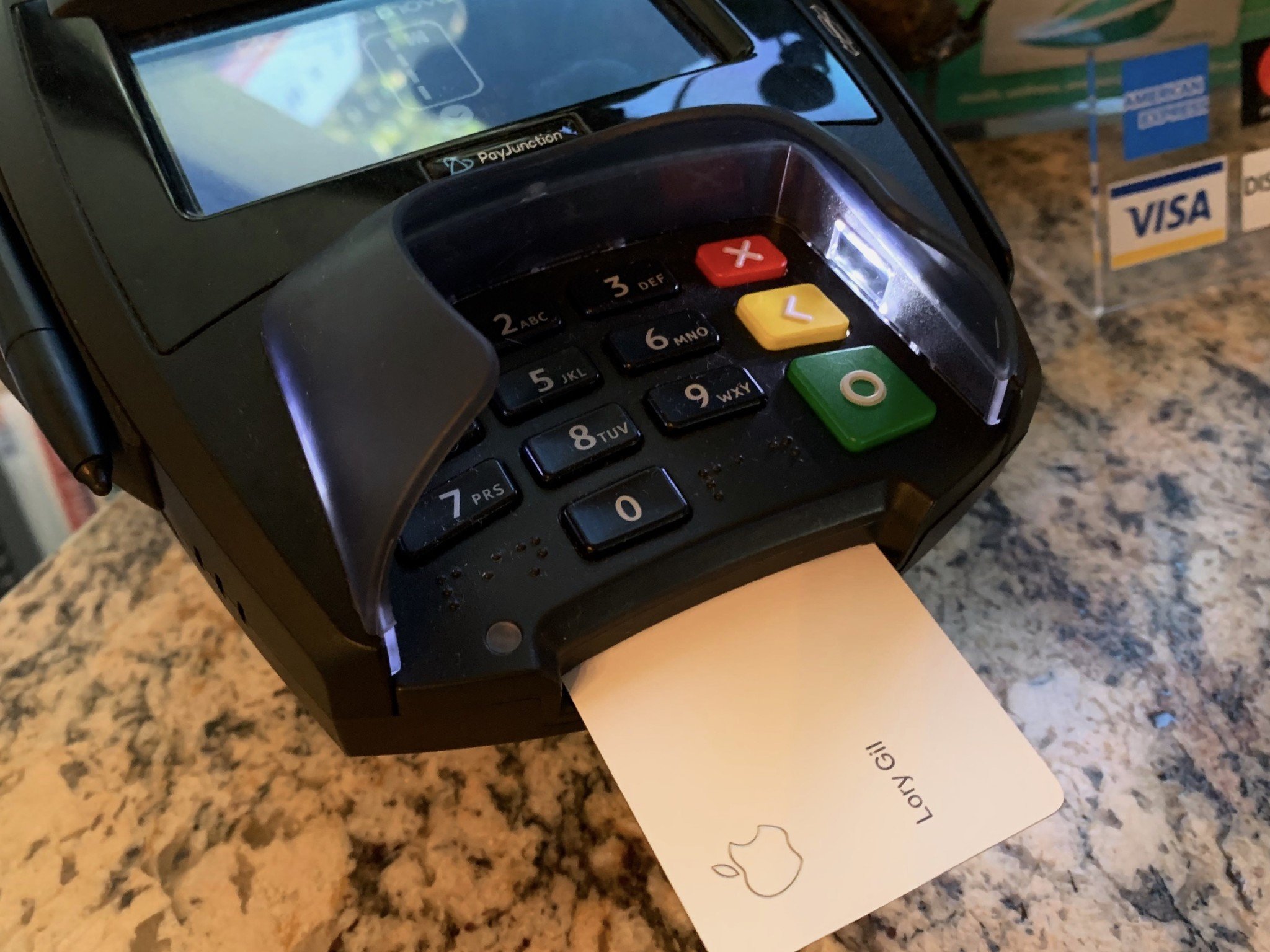
When people's physical Apple Cards started arriving, many were noting how thick it is, how heavy it is. Maybe it's because I don't hold my credit cards in my hand all the time, but I didn't see a noticeable difference at all.
It is heavier than plastic cards, but you don't exactly "feel the weight" like you might imagine. It's only when you hold it at the same time as a plastic credit card that you notice the difference.
As for thickness; it's not at all thicker than a plastic credit card. It's exactly the same thickness as every single card in my wallet. I think it might seem thicker because it's stiff. A plastic card is flexible. You can bend it. Apple Card is not the least bit flexible.
I've used my physical Apple Card at a payment terminal exactly twice as of this writing. Not because I didn't want to show it off — on the contrary, I was so excited to get my physical Apple Card that I actually pointed it out to the cashier my first time using it — but because I want that 2% cashback or I might as well just use my bank card. The one thing I noticed immediately when swiping at the terminal (this particular retailer didn't even have the chip & pin terminal set up yet) is that it felt like metal scraping on metal. Not a pleasant feeling at all. I will, hopefully, rarely ever have to swipe my Apple Card to pay for anything ever again.
More credit. Less bills.
Pay every day and build credit the right way
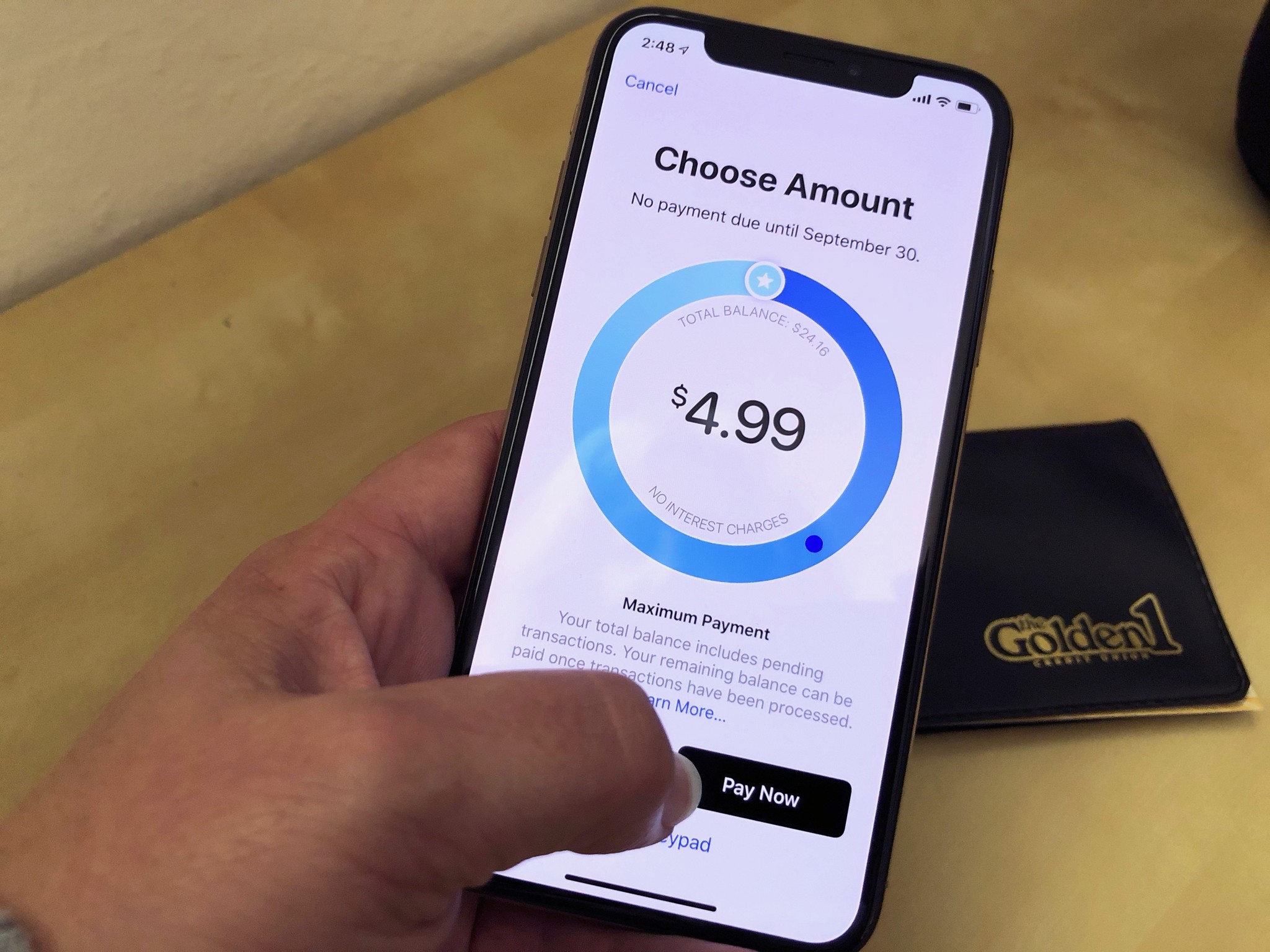
If you were to ask me what the single best feature of the Apple Card is, I'd say it's how fast and easy it is to make payments, whether one-time or scheduled. If I wanted to, I could pay off every transaction I made after it went through. There's no penalty to make a one-time payment (or make multiple one-time payments) and paying off any amount of your balance is as easy as it is to buy something using Apple Pay.
Paying your balance is as easy as it is to buy something with Apple Pay.
Open the Wallet app and tap Pay Early. Then select an amount to pay and tap Pay Now. That's it. No check writing. No setting up a payment plan (though you can have automatic payments set up), no waiting three to five business days for your bank to send the money to the credit card company.
You can also set up more than one bank account to pay off your credit card. If you share your bank account with a significant other and want to pay off a specific purchase using your personal account, but want the joint account to cover the rest, just add both bank routing numbers and account numbers. Then, before pay, you can select which bank to cover which amount.
You can also add your Apple Cash balance to help pay for your credit card bill. When you tap to Pay Now and trigger the biometric scan request, you can tap the arrow next to your payment option and toggle on Apple Cash. This will automatically use all of the funds in Apple Cash to pay the amount you selected of your balance. Anything additional will automatically be withdrawn from your bank account.
I was even unduly nervous, at first, to just make a payment. I had this feeling that I should only pay when the bill came due unless I had some kind of emergency need to pay down the balance. I quickly realized that there is no reason to wait if you want to pay it every day. As long as the transaction has gone through (some retailers take a couple of days to complete transactions), you can pay off the balance.
Of course, you don't have to pay the entire balance. If you make a large purchase and know you won't be able to cover the entire amount within the month, making payments across multiple months is easy to set up. Either pay the bill when it comes due, make a couple of one-time payments throughout the month, or set up an automatic payment on a specific day.
The reason Apple makes it so easy to pay your bill whenever, wherever, is that we shouldn't be accruing interest for small transactions, like the weekly groceries or a night out at the movies. Those smaller amounts should be paid off as soon as we can. Carrying a balance should be saved for larger purchases, like a new iPhone or a medical bill.
This weekend, I'll be dropping more than $1K on surgery for my cat, and I'm glad I've got my Apple Card to cover me upfront so I can pay it off in multiple payments (and get some of that Daily Cash back).
Where'd it all go?
The Apple Card app interface is ... OK
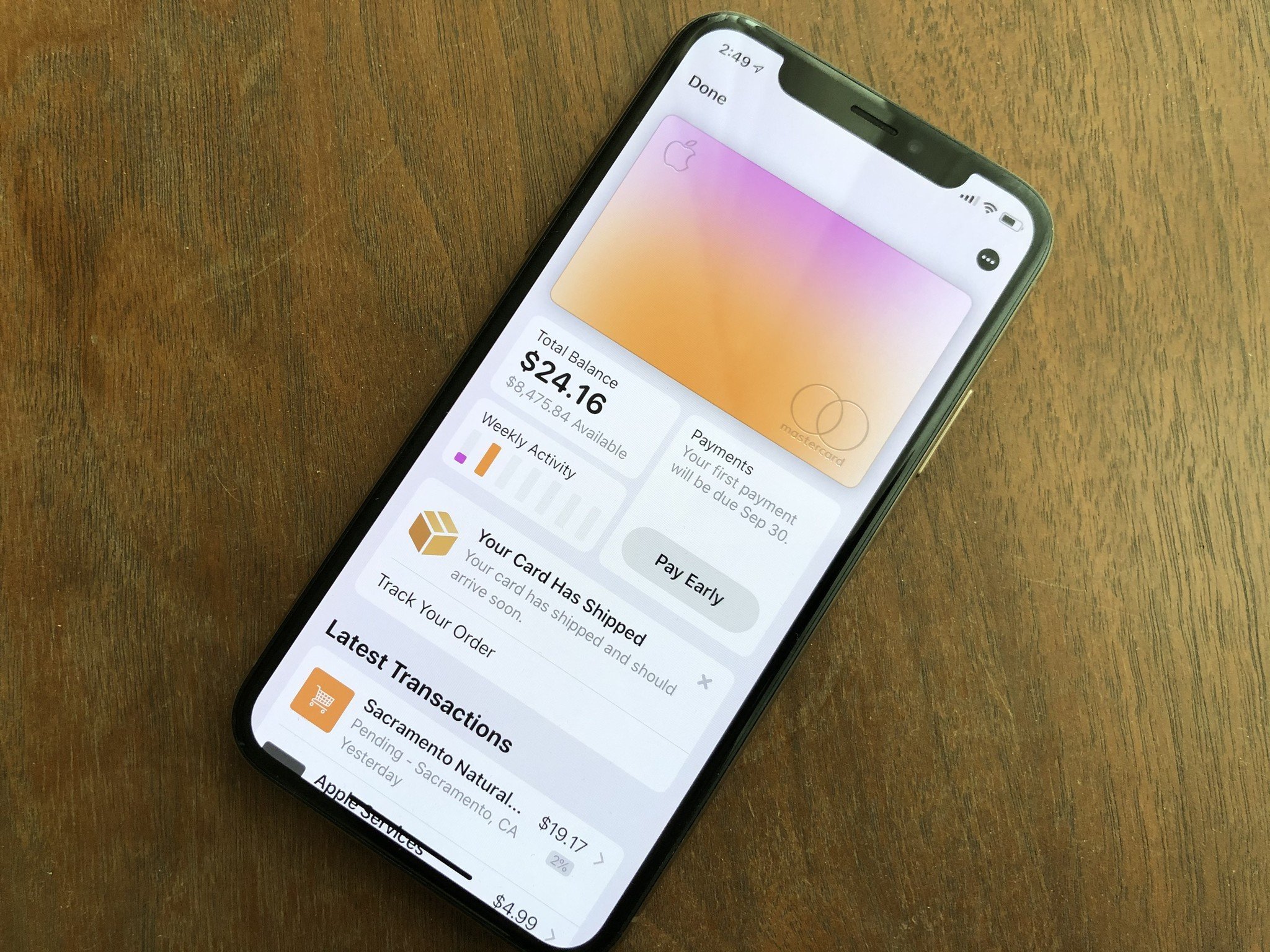
What we've discovered since Apple first announced it was partnering with Goldman Sachs on the Apple Card is that Apple takes care of the app, while Goldman Sachs takes care of the banking details. This is why the Apple Card transaction detail user interface looks so dang good. For me, however, the activity summary and transaction details still seem like beta work.
I've only had my Apple Card for a couple of weeks, so I don't have a lot of historical data to explore, but the basics are there, and they're fairly basic.
When you tap in to view your weekly activities, you can toggle between weekly and monthly views. You can see a graph showing your daily transactions, color-coded by their major categories, like Food & Drinks, Services, Entertainment, Health, and more. Below the chart, you'll see your Daily Cash balance and can tap in to see those transaction details.
Below that, you'll find the categories you've made purchases in, listed from highest to lowest. You can definitely see at a glance how much you're spending in each category, and you can also tap into a category to see what fits into that.
You can't, however, change which category the transaction fits into. For example, my grocery shopping purchase is listed under Food & Drinks. Some of what I purchased does include food and drinks, but I also have household cleaning supplies, personal items, toys for my cat, and other things that are definitely not food or drink. There is no way to recategorize the transaction. It's stuck there and I didn't even get to decide to put it there. Apple decided that groceries belongs in a Food & Drink category, even if I were only purchasing a bottle of Asprin.
I desperately want the ability to customize my categories and come up with new ones that fit my lifestyle better. I want to be able to recategorize something that I don't think belongs in a given category. If Apple really wants me to see where I'm overspending, I should be able to select what categories my transactions are identified as. Otherwise, that spending graph is somewhat pointless (other than to make my Apple Card look pretty).
I'm also a big fan of a good pie chart, but the data is only displayed on a graph either weekly or monthly (monthly showing your transaction details lumped into weeks). I get a much better idea of where I'm overspending when I see it all collected in a pie chart. I understand, based on how Apple separates our spending activities that this may not be possible, so I'm not pushing for that as much as I am hoping for customizable categories.
As for individual transactions, when you tap into one, you'll see the retailer name, the day the purchase was made and for how much, as well as the amount of Daily Cash you received for it. You can also see the location on a map if you went to a physical location. If you paid for something online and the business has a physical address, you'll see the map, but if not, you'll just see the transaction information. I love this level of detail in my transactions. I can't tell the number of times I look at my credit card statement, see a strange retailer name, and can't remember for the life of me where that was. This will still pop up sometimes in the transaction history because Apple can only use the information that's assigned to a business. If you purchase a cup of coffee at a gas station, you might still be confused about that transaction if you're sure you haven't put gas in the car in a week (or if you don't even own a car), but that can't always be helped. The transaction information listed with your Apple Card is more detailed and easier to understand than any credit card I've ever used.
I don't have enough purchase history to give a proper review of the Total Balance page. I have not yet received a statement. So far, however, everything I see in this section is also shown in the Activities and Payments sections, and so seems a bit redundant. I think this link in the dashboard could be better served to provide more details on our spending habits (like pie charts and customizations for categories).
The bill pay interface, as I mentioned above, is hands-down, the best feature of using the Apple Card. I wish it were this easy and comfortable to pay down all credit cards. It's a painless process with clear results.
Small percentage. Big rewards.
The Daily Cash rewards are better than you think
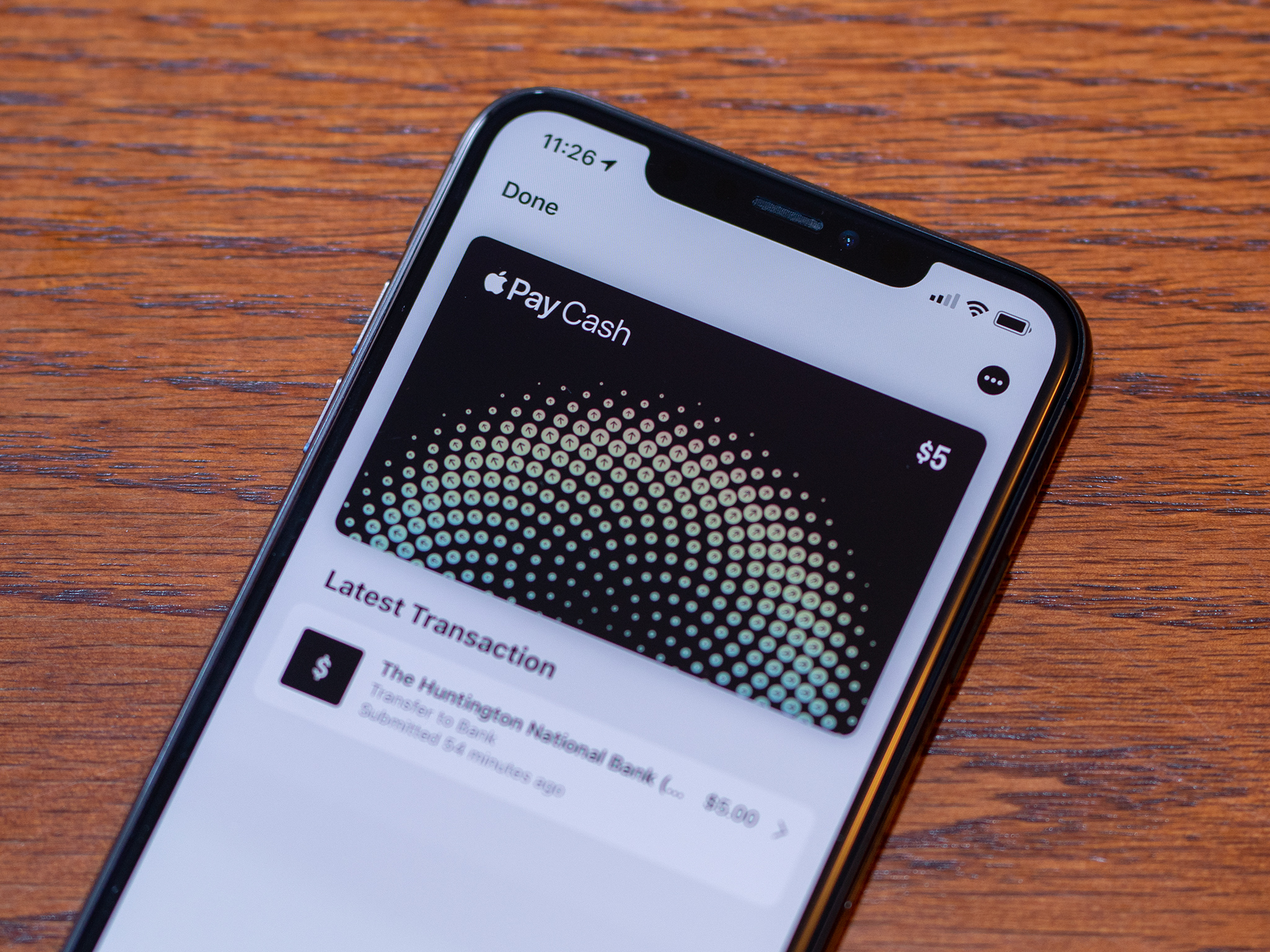
The big negative I'm hearing around the tech blog water cooler is that the Apple Card doesn't offer very good rewards, but I'd argue that Daily Cash (and I mean daily) dropped in your lap without you doing anything is better than most points reward systems out there, and even better than cashback rewards in some ways because you get the money back every day, not monthly (or even twice per month).
As you've probably heard, Apple offers Daily Cash rewards that are automatically sent to your Apple Cash card in the amount of 1% for non-Apple Pay transactions, 2% for any transaction that takes place through Apple Pay, and 3% for transactions for Apple products (including services like Apple Music and digital purchases like apps and games). On the surface, this doesn't sound like much.
By comparison, American Express Blue Cash Everyday offers 3% cashback on supermarket purchases (I don't know about you, but I spend a lot of money at the grocery store). Oh, wait. There's a caveat here. The AMEX card only offers that sweet 3% up to $6,000 per year. Then it drops down to 1%.
Chase Freedom Unlimited offers 3% cashback on all purchase in your first year. Just your first year. After that, all cashback rewards drop to 1.5%. Hmm. Doesn't sound quite so sweet, does it?
The signing bonuses that credit card companies offer reek of tricking you into going immediately into deep debt.
Plus, the signing bonuses that credit card companies offer reek of tricking you into going immediately into deep debt: $500 cashback after you spend $3,000 in the first three months ... $150 back after spending $500 in the first three months ... $150 back after spending $1,000 in the first three months.
I don't feel comfortable going $2,000 in debt in three months just so I can get a one-time $500 check. Do you?
When it comes to cashback, Apple Card's consistent return seems to be a more reliable long-term reward system than the flashy first-year promises that other credit card companies make.
In terms of point rewards: I have a credit card that lets me spend my points to get some funky item or, what I usually do, get a gift card for a specific retailer. Oh, goodie. I get to wait months (or even years) to save up enough points to finally exchange them for that $25 gift card to iTunes, which I then have to wait 4 - 6 weeks to get. Not really immediate gratification, is it?
The one type of card that I think has a relatively useful point system is for travel. Earning miles for flying when you're already flying anyway can actually pay off in the end. But most credit cards that offer points for miles also have an annual fee after the first year, and you're restricted by when you can use those points, or you're at least "charged" more for your points during prime travel seasons. So in the end, they're not as reliable as a solid 1, 2 or 3% cashback across the board.
I'm not saying that there aren't credit cards out there with better rewards and cashback offerings than what Apple Card offers. I'm just saying that you should take a look at what your credit card company is truly offering, in terms of rewards for using their services versus what you pay them to use those services. Is it really as good as you think it is?
I can tell at a glance how my cashback rewards are doing. My Apple Cash card shows my balance at all times. It's as transparent as can be.
Alert!
Notifications that I actually like
Most of the time, when I install a new app I immediately disable any notification offers. I don't like the noise. It stresses me out. But, for Apple Card, I love seeing my activities appear right on my Lock screen, whether it's a transaction I just made, an update to my Daily Cash rewards, or a reminder to pay my bill. I feel more connected to my finances. The notifications remind me that I'm using my credit card and should make a payment or two soon. It's also fun to wake up in the morning to see how much Daily Cash I've accumulated. It's never much each day, but those little purchases start to add up.
When I get a transaction notification, it's like getting a receipt sent directly to my phone, confirming that the transaction went through. It's very satisfying.
Walled gardening
Apple Card really needs to be allowed in third-party budget apps
You may have noticed from my rant about the lack of category customizations that I like to maintain a financial budget. I use Mint, but have tried a lot of them and know that there are some budget apps that are ideal for people that need some extra help sticking to their budget (YNAB, for example). I'm hoping Apple will allow support for adding Apple Card to our favorite budget apps in the near future because it's simply frustrating to know that I have this additional debt account that doesn't fit into my monthly budget. As much as Apple might wish we would only ever use Apple Card, that's just not the reality.
Apple's account balance interface is easy to understand, and you're not constantly bombarded with advertisements for other credit cards you should apply for if you want to "lower your interest rate," (which is how companies like Mint make their profits), but I've always felt that choice is an important feature. I should be able to choose whether I want to add financial tracking to a third-party budget app. Let's hope Apple makes that change soon.
It just works ... everywhere
Yes, you can use Apple Card to pay for anything
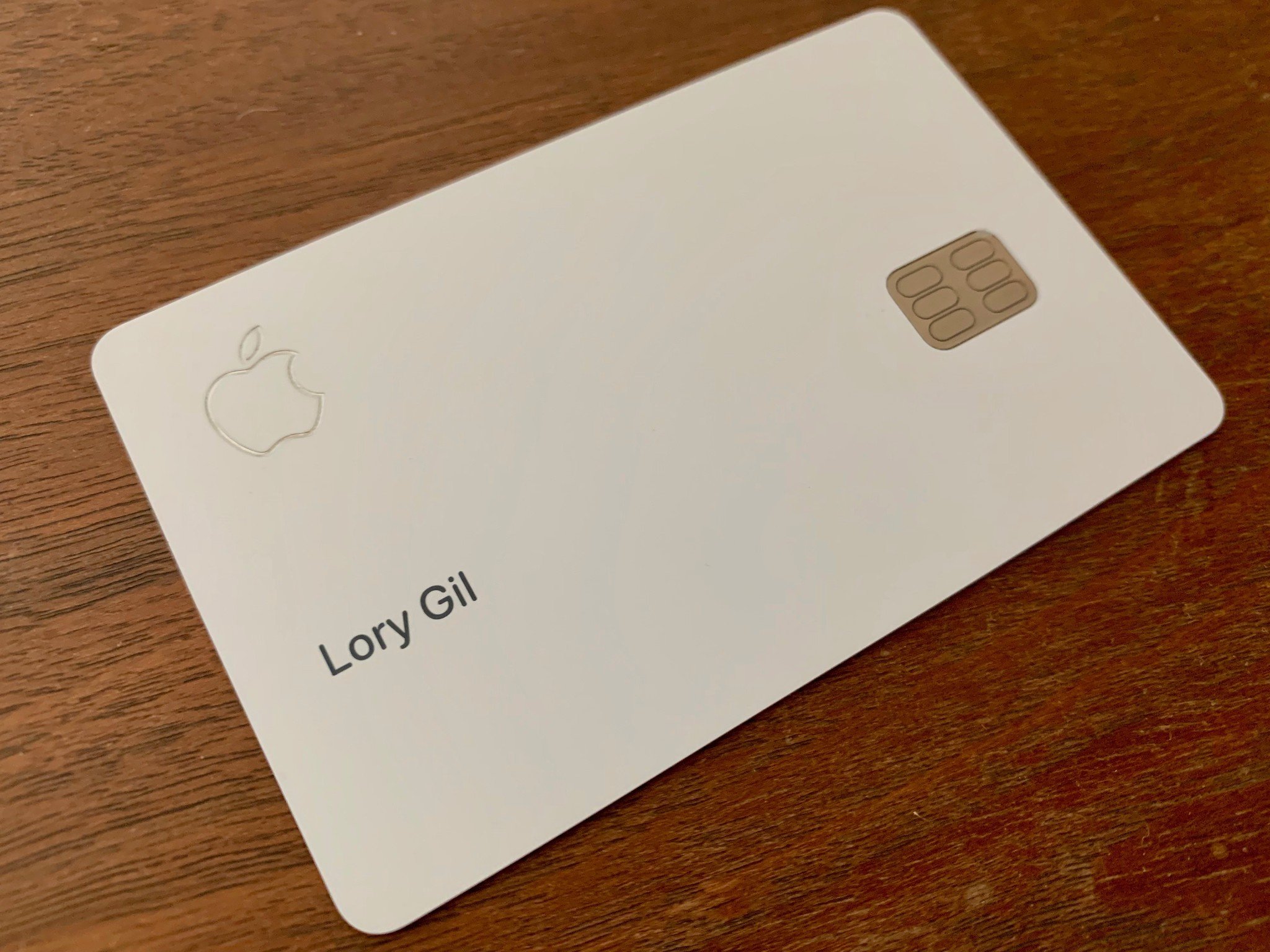
One of the questions I've been asked about how Apple Card works is "Can I use it to pay for (insert service or online payment here)." Yes, you can use it to pay for stuff on Amazon. Yes, you can use it to pay your monthly Spotify subscription. Yes, you can use it to pay your pizza delivery guy (If your local pizza joint takes credit cards). It's a credit card and it's accepted wherever Mastercard is accepted.
You can even add it to Safari Autofill to automatically add it to any website credit card form that asks for it.
Just be careful that you don't overdo it. Don't overspend with your Apple Card just because you can. If you use your Apple Card to buy something you would have otherwise just paid cash for (or used your bank card for), consider paying that purchase off immediately when the transaction has completed. That way, you can earn that Daily Cash, but you're not accruing interest.
Bottomline
Apple Card really is a different kind of credit Card
Let me remind you once again that Apple Card is, after all, still just a credit card. With that having been said, the interaction I have at my fingertips with my transactions, balance, interest accrued, and payment options is uniquely Apple and so incredibly easy to understand that I wish I never had any other credit card before and will probably never apply for another credit card again.
I'm glad I applied for and accepted my Apple Card offer. It is an amazing experience that I really didn't expect to have with a credit card.
Lory is a renaissance woman, writing news, reviews, and how-to guides for iMore. She also fancies herself a bit of a rock star in her town and spends too much time reading comic books. If she's not typing away at her keyboard, you can probably find her at Disneyland or watching Star Wars (or both).

